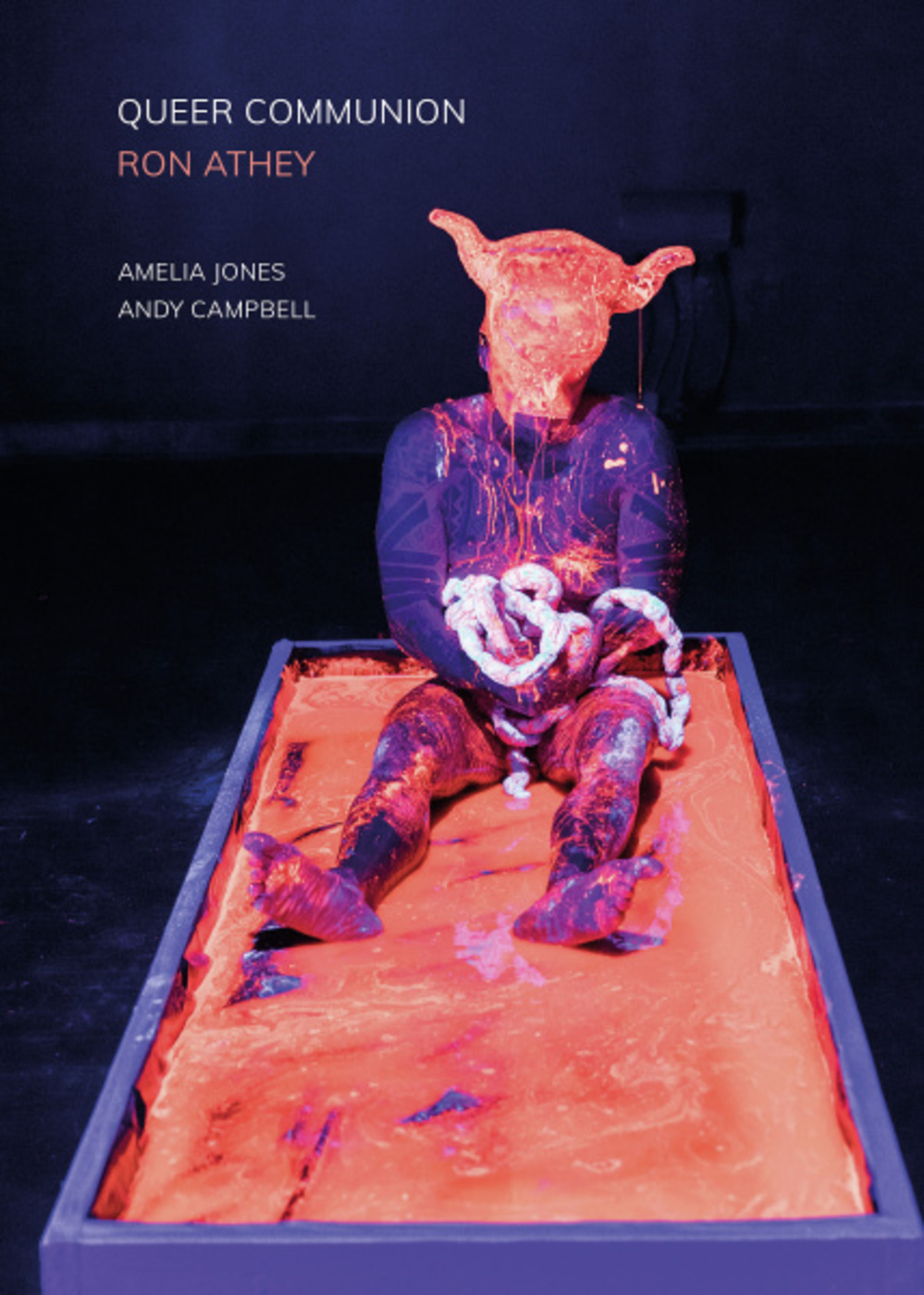Ron Athey June 19, 2021 ➽ September 05, 2021
Queer Communion:
Ron Athey
Queer Communion: Ron Athey is the first major U.S. solo museum presentation of renowned Los Angeles-based performance artist Ron Athey (b. 1961), organized by guest curator Amelia Jones, noted art historian and Robert A. Day Professor of Art & Design, Vice Dean of Academics & Research, and Chair of Critical Studies at USC Roski School of Art and Design.
As one of the most generative and important performance artists to emerge in the twentieth century, Athey challenges traditional limits of artistic practice—activating the body as a site of trauma, resistance, sexuality, and religious ecstacy. The artist, who has been HIV positive since the mid-1980s, explores pain, fetishism, power, and queer politics, commenting on the intersections and synergies among Christian fundamentalist religious traditions and ritual, through highly visceral performances and interventions.
Queer Communion is a historical survey of Athey’s internationally influential body of work, tracing the development of his artistic practice outside of institutions in the music (post-punk and goth), literature, and self-publishing scenes of the 1980s before he gained an international profile and wider exposure in the 1990s, where his work was a lightning rod within the “culture wars.” It also establishes his creative trajectory and lifework through the lens of the queer communities and networks that Athey has engaged and helped form throughout his career. The exhibition comprises videos, costumes and props from performances, photographs from the artist’s extensive archive, press clippings, and other assorted ephemera, providing a discursive view of Athey’s diverse oeuvre interweaving music, literature, performance, film, politics, opera, religion, and theater. Examining Athey’s complicated relationship to institutions, the contemporary art market, and the art historical canon, this presentation situates his work as definitive of a radical practice where art-making is a form of communion.
The concept of “queer communion” anticipates the relational, participatory models of art-making that emerged in the 1990s and accounts for the ways in which social interactions can function as collective engagement and production. The exhibition pays homage to Athey’s generous extension of self into the world, experimentation with different performance models, and intensive collaborations with a range of communities, who support and influence his transgressive work. Organized thematically, Queer Communion provides an overview of Athey’s work that is loosely chronological, with overlapping themes and modes of practice and the mood, political energies, and creative chaos of his various and often interrelated communities.
The exhibition is accompanied by a 456-page, fully-illustrated publication, edited by Amelia Jones, the exhibition’s curator, and Andy Campbell, associate professor of Critical Studies at the University of Southern California Roski School of Art and Design, published by Intellect Books. Emphasizing the ephemeral and largely uncollectible nature of Athey’s work, the book places his own writing at its center, turning to memoir, recollection, and narration to forge a dynamic archive of his performances. In addition to documenting Athey’s art, ephemera, notes, and drawings, the volume features commissioned essays, object lessons on individual objects in the Athey archive and found in the exhibition, and short testimonials by friends and collaborators, including Dominic Johnson, Amber Jamilla Musser, Julie Tolentino, Bruce La Bruce, Ming Ma, David Getsy, Alpesh Patel, and Zackary Drucker, among many others.
Queer Communion: Ron Athey is organized by Amelia Jones, guest curator. Archival and research assistance for the exhibition and publication was provided by Ana Briz, David Frantz, Hannah Grossman, Dominic Johnson, and Maddie Phinney.
The exhibition is made possible thanks to the City of Los Angeles Department of Cultural Affairs, Laura Donnelley and the Good Works Foundation, Tim Disney, The Audrey and Sydney Irmas Charitable Foundation, and the Michael Asher Foundation.
ICA LA is supported by the Curator’s Council, Fieldwork, and 1717 Collective.
Los Angeles-based artist Ron Athey (b. 1961) has been working at the vanguard of performance art for 30 years. Self-taught, he has performed extensively at clubs, alternative spaces, festivals, and museums in the U.S. and abroad. Athey formed a company of performers in the 1990s, producing the Torture Trilogy, addressing the AIDS pandemic through memorializing and philosophical reflection. He has developed genre-stretching theatrical works like Joyce (2002), The Judas Cradle (2005), and major solo performances, including Sebastiane (2014), Incorruptible Flesh (2006), and The Solar Anus (1998). Currently, Athey is performing Gifts of the Spirit (2018), which returns to his Pentecostal roots, with an embodied performance anchored in the spiritual; and Acephalous Monster (2018), a multimedia performance with projections, readings, lectures, appropriated text, and sound.
Amelia Jones is the Robert A. Day Professor of Art & Design, Vice Dean of Academics & Research, and Chair of Critical Studies at USC Roski School of Art and Design. A feminist curator, theorist, and historian of art and performance, her recent publications include Seeing Differently: A History and Theory of Identification and the Visual Arts (2012); Perform Repeat Record: Live Art in History (2012; co-editor Adrian Heathfield); Otherwise: Imagining Queer Feminist Art Histories (2016; co-editor Erin Silver). Her exhibition Material Traces: Time and the Gesture in Contemporary Art took place in 2013 in Montreal, where she programmed the events Trans-Montréal (2015), followed by “On Trans/Performance,” a special issue of Performance Research (2016). Her “Live Artists Live” program series took place at USC in 2016. Jones is currently working on a book titled In Between Subjects: A Critical Genealogy of Queer Performance.







































